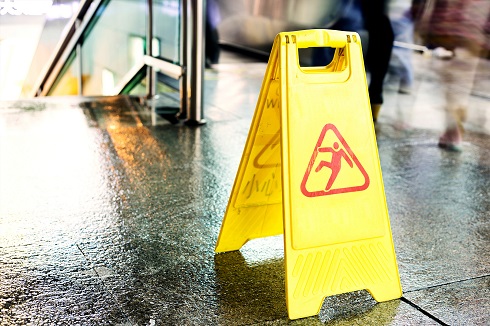In Australia, costs due to slips, trips and falls in buildings are estimated at $4 billion per year. Expenses on hospital admission have reached the average of $1.3 billion annually.
Faced with this problem, state-based occupational health and safety regulations in Australia require that floor surfaces in the workplace be reasonably free from possible slip, fall and trip hazards.
Falls and injuries in the workplace may be caused by various factors, including the design and construction of buildings. This is why it’s important to conduct slip resistance testing and implement some practical solutions to avoid accidents at work.
Below are some flooring materials that can be incorporated in the design and construction of an office building to help manage slips, falls and trips:
• Carpet. This synthetic material is a cost effective solution for avoiding slips, falls and trips. It can be used in the entrance, lobby, corridors and bathrooms to absorb water, dirt and sound. Although carpets generally have a shorter lifespan compared to hard floor surfaces, installing them from wall to wall can lessen the risks of slipping. When used in small office areas, make sure to install them in the recess of the floor.
• Ceramic Tiles. This flooring material can be used in the kitchen, pantry and lecture rooms. But make sure to keep this floor surface sealed as this can be slippery when wet.
• Fibreglass Grating. This can be an excellent slip-resistant material for factory areas where fluids are unavoidable since it can drain away liquids easily and quickly. It can also be used in walkways and overhead platforms.
• Rubber. Slip-resistant rubber is great for use in ramps and stairs. But it can be less effective in wet areas. To avoid accidents from slips, falls or trips, the rubber must be fixed properly on the edges and joins.
• Steel Plate. Steel plates with a raised pattern, such as a chequer plate, may provide good slip resistance. This is commonly used in factory areas to span openings in floors, or those with very heavy traffic. Like the rubber and cork, it tends to be slippery when oily or wet.
• Timber. Wood is an excellent flooring material in gymnasiums, meeting halls, factories and offices for dry floor surfaces. To keep this material slip-resistant, make sure to seal it to prevent absorption of oil and water. Also, don’t make the surface too glossy by polishing regularly.
Bottom Line
To avoid accidents from falls, slips or trips, selecting the ideal flooring material that best suits the design of your office space is crucial. Most of all, floor slip testing provides a measure to keep your workplace safe and slip-resistant for your employees, customers and clients.
At Slip Check, we can provide you with reliable independent slip testing services to assess floor safety and find the ideal solutions to keep your office space safe.
Interested to learn more about this topic? Then watch out for our next article as we provide you with other slip-resistant flooring materials and more tips to avoid slips, falls and trips.
Author: Ryan Voorderhake

Email: info@SafeEnvironments.com.au
Ryan Voorderhake is a tertiary qualified slip resistance testing consultant with Safe Environments having a completed a Bachelor of Forensic Science (Honours) in Applied Chemistry at the University of Technology, Sydney. Ryan is proficient having undergone successful completion of Safe Environments NATA endorsed training program in wet pendulum testing, dry floor friction testing, oil wet ramp testing and pendulum calibrations to the Australian Standards AS 4586 & AS 4663. With a size 13 boot, Ryan is the giant of floor slip testing when undertaking the oil wet ramp test.
Ryan is proficient in conducting luminance reflectance testing to determine compliance with luminance contrast testing. Luminance contrast testing is a useful aid to assist visually impaired persons in wayfinding.
As well as a qualified floor slip tester, Ryan utilises his forensics degree in conducting asbestos analysis and materials testing duties for ceramic and stone tiling systems.


